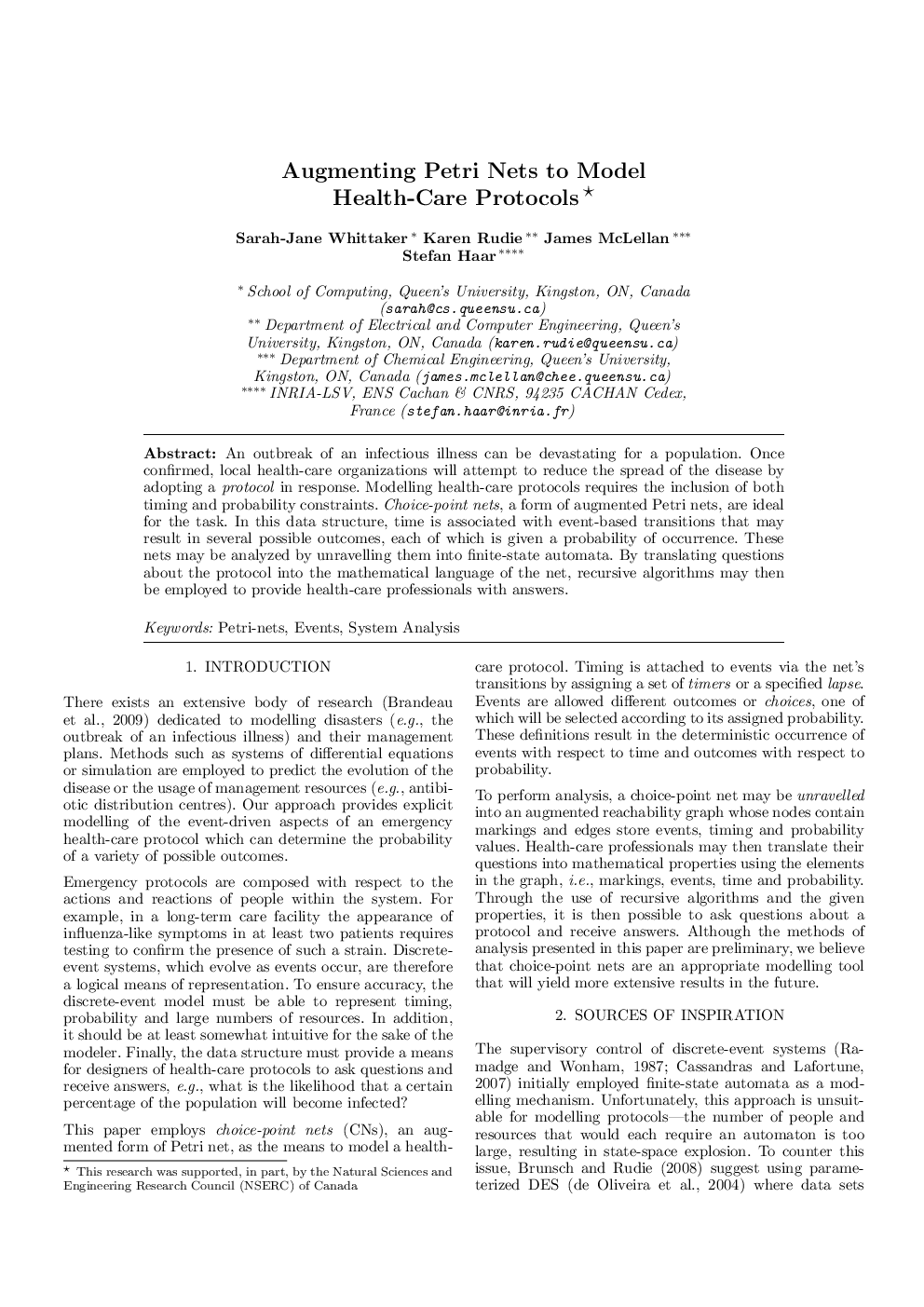| Article ID | Journal | Published Year | Pages | File Type |
|---|---|---|---|---|
| 716503 | IFAC Proceedings Volumes | 2010 | 6 Pages |
An outbreak of an infectious illness can be devastating for a population. Once confirmed, local health-care organizations will attempt to reduce the spread of the disease by adopting a protocol in response. Modelling health-care protocols requires the inclusion of both timing and probability constraints. Choice-point nets, a form of augmented Petri nets, are ideal for the task. In this data structure, time is associated with event-based transitions that may result in several possible outcomes, each of which is given a probability of occurrence. These nets may be analyzed by unravelling them into finite-state automata. By translating questions about the protocol into the mathematical language of the net, recursive algorithms may then be employed to provide health-care professionals with answers.
